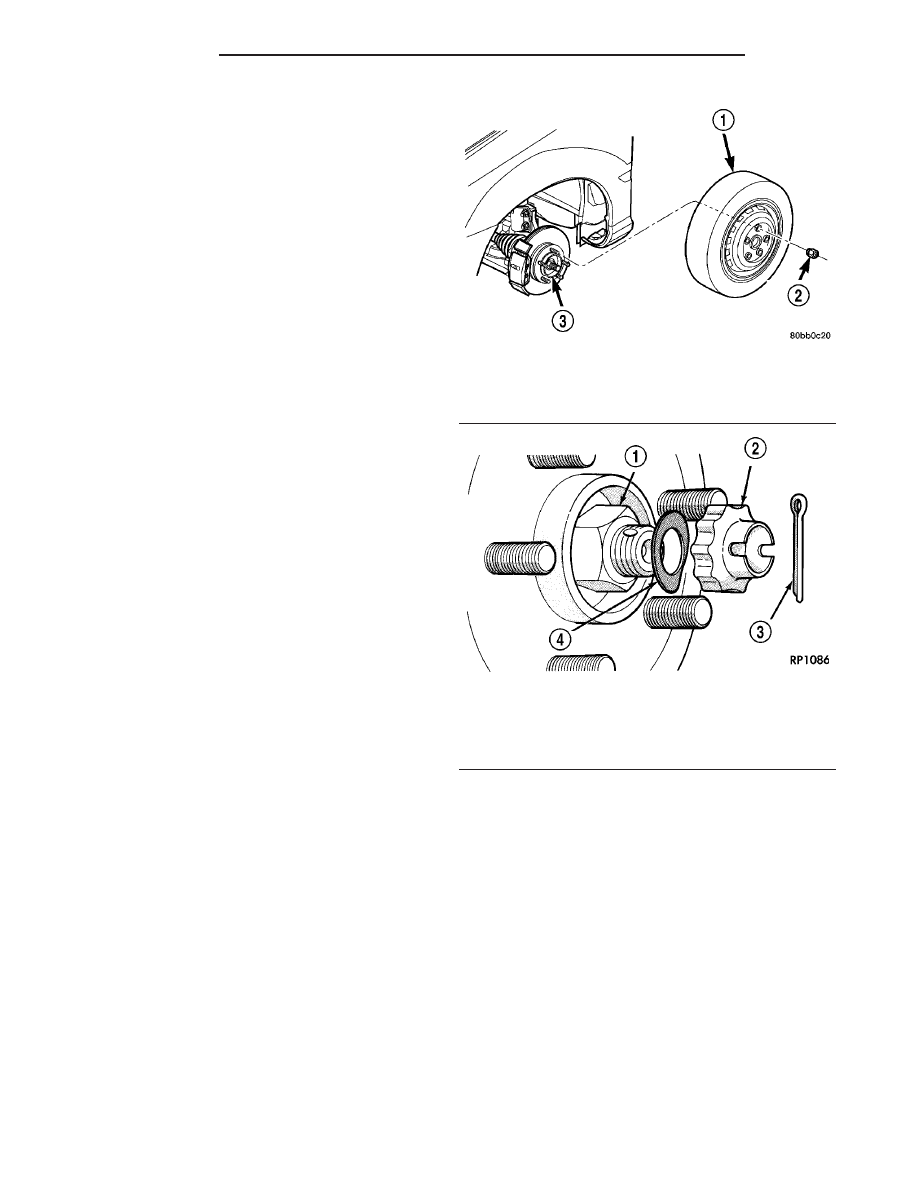Dodge Neon / Neon SRT-4. Manual - part 25

Replace only the affected side. Replacing both half-
shafts is not necessary.
(2) A sticking tripod joint spider assembly (inner
tripod joint only). Isolate the condition to one side of
the vehicle. Replace only the affected side. Replacing
both halfshafts is not necessary.
(3) Improper wheel balance.
VIBRATION AT HIGHWAY SPEEDS
(1) Foreign material (mud, etc.) packed on the
backside of the wheel(s).
(2) Out of balance front tires or wheels.
(3) Improper tire and/or wheel runout.
REMOVAL
REMOVAL—EXCEPT 2.4L TURBO MODELS
CAUTION: Boot sealing is vital to retain special
lubricants and to prevent foreign contaminants
from entering the C/V joint. Mishandling, such as
allowing the assemblies to dangle unsupported, or
pulling or pushing the ends can cut boots or dam-
age C/V joints. During removal and installation pro-
cedures, always support both ends of the halfshaft
to prevent damage.
CAUTION: The halfshaft, when installed, acts as a
bolt and secures the front hub/bearing assembly. If
vehicle is to be supported or moved on its wheels
with a halfshaft removed, install a PROPER–SIZED
BOLT AND NUT through front hub. Tighten bolt and
nut to 244 N·m (180 ft. lbs.). This will ensure that
the hub bearing cannot loosen.
(1) Disconnect battery negative cable.
(2) Place transaxle in gated park.
(3) Raise vehicle on hoist.
(4) Remove wheel and tire assembly (Fig. 4).
(5) Remove the halfshaft to hub cotter pin, nut
lock, wave washer and hub nut (Fig. 5).
(6) If equipped with ABS, disconnect the front
wheel speed sensor and secure harness out of the
way.
(7) Remove nut and bolt (Fig. 6) retaining ball
joint stud into steering knuckle.
CAUTION: Use caution when separating ball joint
stud from steering knuckle, so ball joint seal does
not get damaged.
(8) Separate ball joint stud from steering knuckle
by prying down on lower control arm (Fig. 7).
CAUTION: Care must be taken not to separate the
inner C/V joint during this operation. Do not allow
halfshaft to hang by inner C/V joint, halfshaft must
be supported.
(9) Remove halfshaft from steering knuckle by
pulling outward on knuckle while pressing in on half-
shaft. Support outer end of halfshaft assembly. If dif-
ficulty in separating halfshaft from steering knuckle
is encountered, use Puller 1026 as shown in (Fig. 8)
to separate shaft. Do not strike shaft with ham-
mer.
(10) Support outer end of the halfshaft assembly.
CAUTION: Do not pull on interconnecting shaft
when removing halfshaft assembly. Inner joint may
become separated.
(11) Remove the inner tripod joints from the side
gears of the transaxle using a punch to dislodge the
inner tripod joint retaining ring from the transaxle
side gear. If removing the right side inner tripod
Fig. 4 Wheel and Tire Removal
1 - WHEEL/TIRE ASSY.
2 - LUG NUT (5)
3 - HUB
Fig. 5 Halfshaft Retaining Hardware
1 - HUB NUT
2 - NUT LOCK
3 - COTTER PIN
4 - SPRING WASHER
3 - 4
HALF SHAFT
PL/SRT-4
HALF SHAFT (Continued)